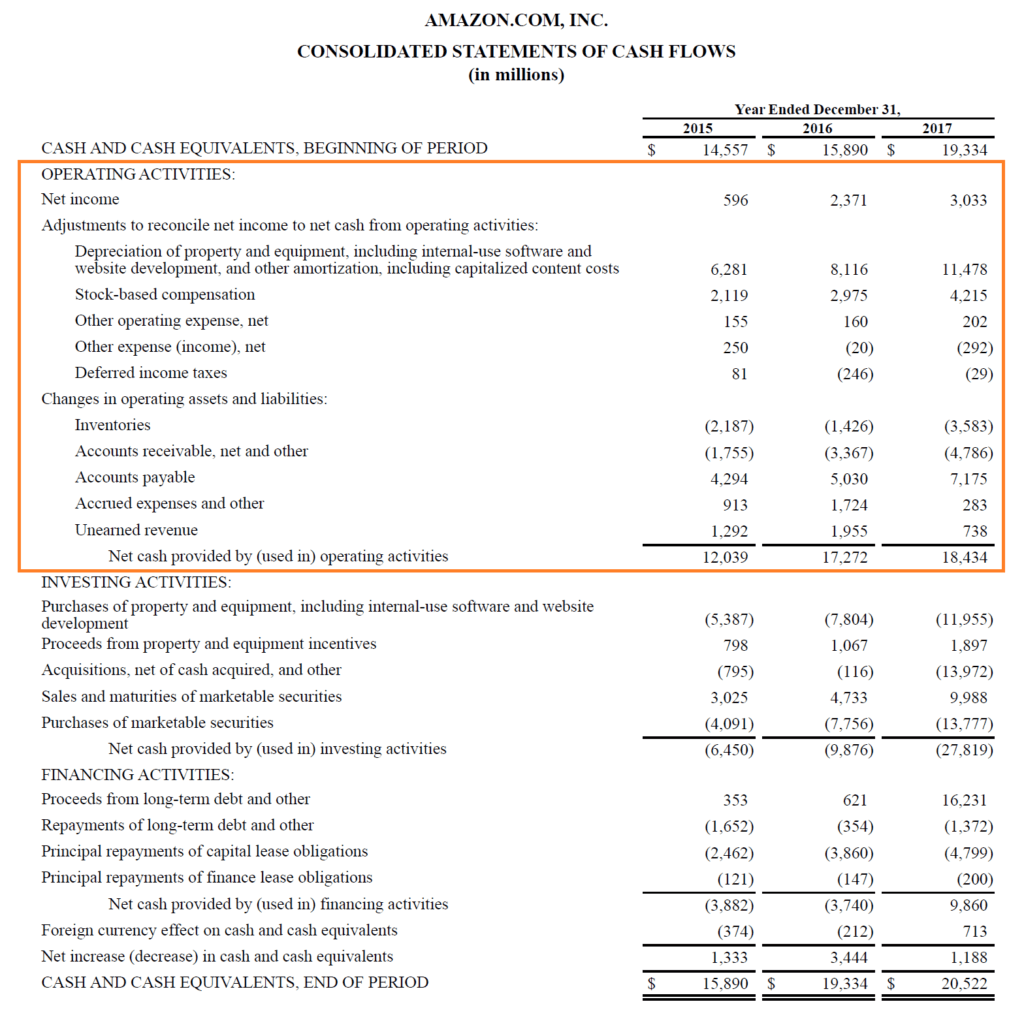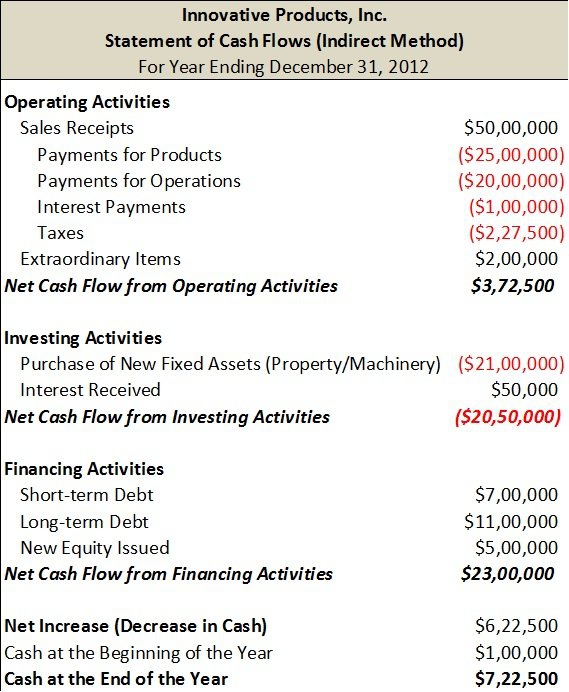


Also, financial activities can include equity and debt. This section provides details about the shareholder's dividend, cash from investors and company stock sales. The last section of the cash flow statement records the cash flow between the company and its creditors and owners. Often, companies generate cash flow from investment activities by selling property or equipment. Though having a positive cash flow from investment is a good sign, investors prefer investing in companies that generate cash from business operations rather than investment activities. A high CAPEX can show that a company is investing in its future operations. Usually, companies with a high CAPEX are growing. An increasing CAPEX means a reduction in cash flow. Also, analysts use the investment section of a cash flow statement to find changes in the capital expenditure or CAPEX. When an analyst wants to understand the company's investment in property, they check the changes in the cash flow statement. These investment activities reflect the overall change in a company's cash position. The second part of the investment activities records the profit and losses a company faces because of investment in assets like plant, property and equipment. Also, a company with a positive cash flow can easily manage the daily business operations.

When companies cannot generate sufficient cash flow for operational growth, they secure financing from external sources. After this, list all noncash items involving operating activities. This section of the cash flow statement records the company's net earnings that you can get from the net income field of the income statement. Usually, successful companies generate revenue from their daily operations and use income from their investments to offset expenses from operations. Income from business activities includes cash receipts, product sales and dividends. Expenses from operating activities relate to the core business operation like employee payroll, production cost, customer payment, taxes and other cash payments. The cash flow statement records the expense and income from the daily business activities.

Using the structure or format of a cash flow statement, you can list transactions about the following areas: Operating activities This financial statement lists all the completed cash transactions and estimates the expenses and revenue. Related: What Are The Functions Of Accounting? (Definition And Types) Format of a cash flow statement Ideally, a company's cash from operating income exceeds the net income because a positive cash flow shows that it can remain solvent and grow its operations. For example, if the statement shows that cash flow is negative, a business can make necessary adjustments to increase its revenue and pay its expenses. This statement allows these professionals to make an informed strategic decision.Īlong with a balance sheet and income statement, a cash flow statement helps a business analyse its financial health. The cash flow statement provides business owners and stakeholders with information relating to the company's current and future debit and credits. Having adequate cash in hand is the bare minimum requirement for a business to stay solvent and avoid bankruptcy. It portrays how a business can spend its cash. What is a cash flow statement?Ī cash flow statement is a financial statement that tracks the cash that flows in and out of business during an accounting period. In this article, we discuss what a statement of cash flow is, understand its structure, discover the methods of preparing it and explore examples of this statement. Understanding the format of a cash flow statement can help you create this financial statement and ensure it accurately reports the net cash of a company. This financial statement provides a detailed overview of a business' cash transactions and reports how a company handles its accounting. Many businesses rely on cash flow statements when monitoring their financial health.


 0 kommentar(er)
0 kommentar(er)
